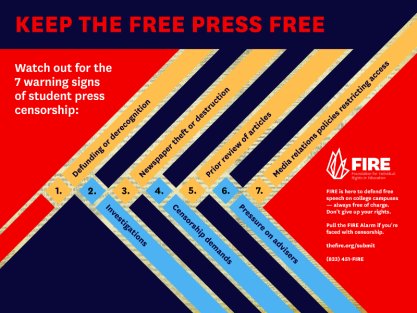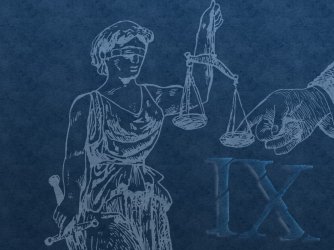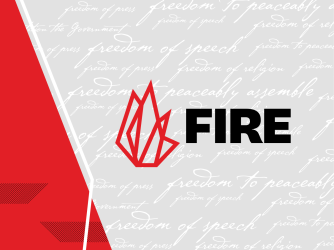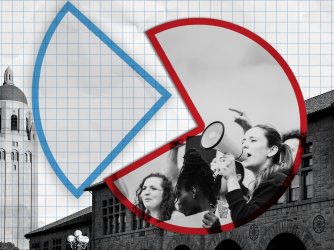Table of Contents
More than ever, student journalists must be on the lookout for censorship

In 2019, FIRE released “Under Pressure: The Warning Signs of Student Press Censorship,” a report documenting FIRE’s advocacy for student journalists’ rights and the threats they face. With over two decades spent defending campus free expression, FIRE has seen firsthand that student journalists are often the immediate line of defense against administrations intent on violating student and faculty rights — and sometimes, they pay the price for it.
Today, for Student Press Freedom Day, we’re revisiting some of the student press cases FIRE had fielded since the report’s release and the warning signs they illustrate to remind student journalists how to identify, and stay vigilant against, potential censorship. (For more information about Student Press Freedom Day, see the Student Press Law Center’s list of events and resources, and join us today at 1:30 p.m. ET for a panel discussion about student press censorship.)
What are the warning signs?
Though limits on the student press can come in many forms, FIRE identified seven primary signs that censorship against the student press is underway, from threats to revoke funding to investigations meant to frighten reporters into silence. The signs are:
- Defunding & derecognition
- Investigations
- Theft & destruction
- Censorship demands
- Prior review
- Pressure on advisers
- Media relations policies

Media relations policies burden campuses amid pandemic
Over the past year and some months since the release of “Under Pressure,” FIRE has seen some warning signs more frequently than others, especially media relations policies. As we wrote in the report:
Faculty members are often experts in their fields and can be useful resources for student, local, and national media outlets in explaining complicated issues to the public. But some universities have crafted restrictive policies that frustrate the ability of faculty members to speak with the media, effectively imposing a gag order. Student journalists — who are increasingly important members of local media, too — have found themselves impacted by such policies.
While media relations policies are frequently applied to faculty, student employees have felt the pressure from them, too. And since last March, COVID-19 has provided an unfortunately pressing example of how policies inhibiting conversations with the media can have a serious effect on campus life and, in this case, safety.
As some universities were beginning to reopen last summer for the fall semester, FIRE learned of a troubling trend: student employees keeping silent about their COVID-19 reopening concerns out of fear that they would face consequences for speaking out. At the University of Missouri, Louisiana State University, the University of North Carolina at Chapel Hill, Frostburg State University, and the University of Virginia, reports surfaced that resident assistants were limited by various policies limiting their ability to speak to the media, including student journalists.
At Louisiana State University for example, RAs were banned from criticizing their school’s COVID response under a policy — which FIRE could only obtain from LSU through a public records request — that warned: “Even though you may be discussing your own experiences, you will be identified as an LSU staff member, so you are representing the university. This is not an appropriate time to air your disagreements with Residential Life.” To the detriment of their student employees’ rights, LSU ignored FIRE’s recommendations for improving its policy on student employees’ speech.
Some universities, however, listened to FIRE’s counsel and worked to revise their restrictive policies. At both UNC Chapel Hill and the University of Virginia, which both earn “green light” ratings from FIRE for speech-protective policies, administrators confirmed that their media relations policies would be improved so resident assistants’ speech would no longer be unduly burdened.
Resident assistants weren’t the only ones to feel the pressure of media relations policies amidst the pandemic. In March 2020, New York University Grossman School of Medicine and NYU Langone Health both ordered the university’s faculty doctors against speaking with journalists about COVID-19 without the express approval of the Office of Communications and Marketing. This would be a troubling directive at any time, but it was especially alarming when issued just as the terrible impact of the pandemic was starting to be understood in the United States.
On Nov. 10, FIRE wrote to 15 of the top U.S. colleges after a report published by John K. Wilson of the University of California National Center for Free Speech and Civic Engagement found that a majority of leading institutions maintain policies that limit the media, including student journalists. FIRE warned universities with room for improvement including Harvard University, Massachusetts Institute of Technology and Columbia University, that “[t]he unique role of universities as ‘peculiarly the “marketplace of ideas”’ cannot be squared with burdens on journalists’—including student journalists’—right to seek information.”
Investigations and threats against student journalists continue
On the subject of investigations into student journalists, FIRE wrote in “Under Pressure”:
A university doesn’t always need to punish student journalists to control what they print. Sometimes, the threat of punishment implied by an investigation, or the stress caused by the process of the investigation, is enough to pressure students into staying silent rather than risking harm to their studies or future careers.
This is a tactic FIRE has seen used repeatedly against individual journalists or newspapers that prove to be a squeaky wheel when all administrators want is silence. Two recent cases FIRE at Haskell Indian Nations University and Frostburg State University convey how willingly administrators can turn to outright threats and baseless investigations to silence student journalists whose work they disfavor.
Haskell Indian Nations University already had a reputation for violating student rights before it turned its sights on the student press. But the university only made its reputation worse when, on Oct. 16, Haskell President Ronald Graham issued a blatantly unconstitutional directive to Jared Nally, editor-in-chief of student newspaper The Indian Leader. Graham warned Nally not to criticize members of the Haskell community or request information from government agencies and record interviews — behavior more commonly known as “journalism.”
FIRE, the Student Press Law Center, and the Native American Journalists Association wrote to Haskell to demand Graham rescind his directive against Nally. For months, Nally and The Indian Leader were forced to work under the directive until Haskell counsel clarified on Jan. 13 that Graham had penned an undated letter asserting that he was rescinding the directive. Haskell claimed the letter was intended to be sent on Nov. 20 but sat for nearly three months because of an “administrative error.”
Nally isn’t done fighting yet. He’s using public records requests to demand answers from Haskell about why it forced him to operate under an unconstitutional directive for months. And on Jan. 19, FIRE, the SPLC, and NAJA wrote yet again to Haskell to criticize the university’s clear disregard for its student press, and FIRE also submitted a complaint to the Department of Education, stating Haskell “substantially misrepresented” itself by alleging to protect student and faculty free expression.
Like student journalists at other schools, Frostburg State University student reporters were investigating the impact of COVID-19 on campus this fall. Student paper The Bottom Line reported in November that RAs alleged that “the Office of Residence Life would now require Hall Directors to indicate ‘attitude’ issues on employment evaluations if RAs spoke to media outlets about the university’s handling of the virus.” Through public records requests, The Bottom Line found that the university’s housing director wrote, but never sent, a draft statement in response to the paper’s questions about RAs. That draft read: “In the real world, if you bad mouth your employer you could lose your job. With the Resident Assistants, who are employed by Frostburg State University, speaking out against their employer may be noted in their evaluation forms and used as a teaching tool.”
FIRE sent a letter asking FSU to confirm it would not punish RAs for speaking out about their pandemic-related concerns. On November 20, the university responded, telling FIRE that “FSU has no policy restricting the free speech of its resident assistants.” But just three days later, administrators called in student journalist Cassie Conklin to accuse her of harassing a faculty member a month prior. The university cited video evidence of Conklin’s harassment — evidence that, in reality, proved Conklin’s innocence.
Longtime FIRE readers will be unsurprised to learn that Conklin’s meeting about the investigation happened to occur the next business day after her reporting about a student’s COVID experience garnered wider public attention. And in addition to launching an investigation into Conklin, FSU also demanded The Bottom Line investigate her as well. After FIRE and the Student Press Law Center issued a press release and letter FSU relented. But in an interview with FIRE earlier this week, Conklin explained that she’s not done asking questions just yet. (Conklin is also taking part in FIRE’s “Student press war stories” panel at 1:30 p.m. ET today.)
For their mistreatment of student journalists, both Frostburg State University and Haskell Indian Nations University earned a spot on FIRE’s 2021 list of the 10 worst colleges for free speech.
Newspaper thefts, firings, and pepper spray: Other warning signs
Media relations policies and investigations of journalists were not the only examples of censorship student journalists faced in recent months. Last March, for example, FIRE and the Student Press Law Center wrote to the president of Virginia Commonwealth University’s Student Government Association over allegations that she and other student government members stole hundreds of copies of the school newspaper because it printed negative coverage of them. At Diablo Valley College, Fernando Gallo, faculty adviser to student newspaper The Inquirer, was fired in apparent retaliation for the paper’s critical coverage of the college.
And in Columbus, Ohio, three student journalists were pepper-sprayed by police on June 1, 2020. The students from Ohio State’s student newspaper, The Lantern, were at an intersection adjacent to OSU’s campus covering a protest following the homicide of George Floyd. Police officers approached them as they were reporting and told them to leave, citing the city’s curfew — which did not apply to members of the media. When the student journalists responded explaining that they were exempt, police officers shoved at least one reporter and began pepper spraying them. In case it wasn’t clear already, pepper-spray should definitely count as a warning sign for the student press.
The solution: Know your rights
The best defense against censorship of student media is knowing how to spot it. Read FIRE’s full report, “Under Pressure: The Warning Signs of Student Press Censorship,” for more case examples and discussion of how campus censorship operates. Once you know the signs, know your rights, too. Learn about your First Amendment protections — whether at a private or public university — and how your institution does (or doesn’t) respect them.
If that fails, and you believe you’re experiencing censorship, documentation can be vital in exposing violations of students’ rights. Keep notes of meetings, emails, letters, and phone calls shared between newspaper staff and university administrators when censorship is occuring. And lastly, submit a case with FIRE or contact our new hotline for student journalists (1-833-451-FIRE). We stand ready to help.
Recent Articles
FIRE’s award-winning Newsdesk covers the free speech news you need to stay informed.

BREAKING: New Title IX regulations undermine campus free speech and due process rights


Stanford president and provost cheer free expression in open letter to incoming class
